Unlike many veteran cyclists, I’ve actually been interested in e-bikes since they first arrived on the scene, if mostly from the technical side and curiosity in trying one out. But I didn’t begin getting serious about them until they started to become available from the mainstream brands for whom there is always a shop and repair facility close by. As I eventually found out, when something goes wrong it’s nice to have a LBS as well as a reputable manufacturer to back the product.
My wife was ahead of me in wanting to pull the trigger, so we purchased her first e-bike in January, 2019. Her choice was the Trek Verve+ Lowstep, which was not all that different in geometry and sizing from the standard model Verve that she had been riding. She got on and never looked back (unless it was to look back at me and wonder why I couldn’t keep up!).
After a lot of research, looking seriously at three different brands, I decided on the Specialized Vado 4.0, which is a mid-motor, pedal assisted Class 3 e-bike (28mph max assisted speed) whose size and geometry are similar to the Specialized Crosstrail that I have ridden on many adventures over the years.
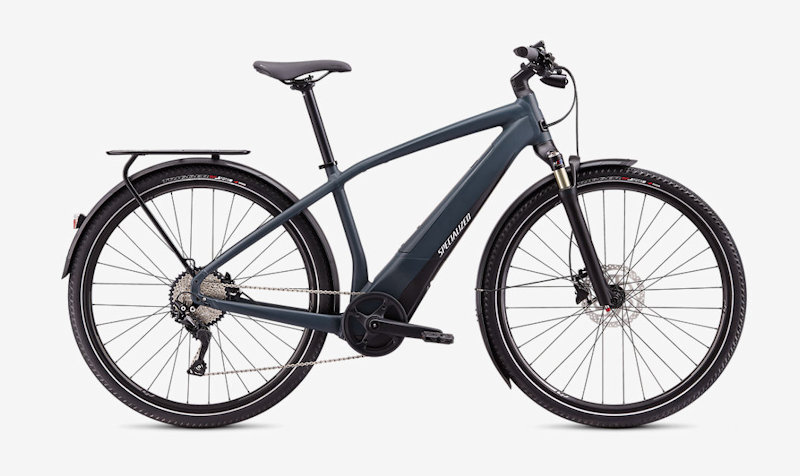
Notice that this model comes with lights and fenders. I was not wild about having to put up with the fenders, but it also has a nice rear rack that is mounted partially on the rear fender, making removal difficult. I may look at other options after the end of the season.
The bike has the usual multiple assist modes, which in this case are labeled Eco, Sport, and Touring. I was hoping to be able to still ride it for fitness with minimal assistance from the motor, but even the Eco mode seemed to be too powerful. Fortunately, Specialized has a smartphone app called Mission Control (one of the reasons I decided on the brand) that allows me to adjust the assistance parameters for each mode as desired. Given our riding environment around here, I currently have the Eco mode set to about half of the default setting and it has proven adequate. In addition, the lower power setting gives me more range.
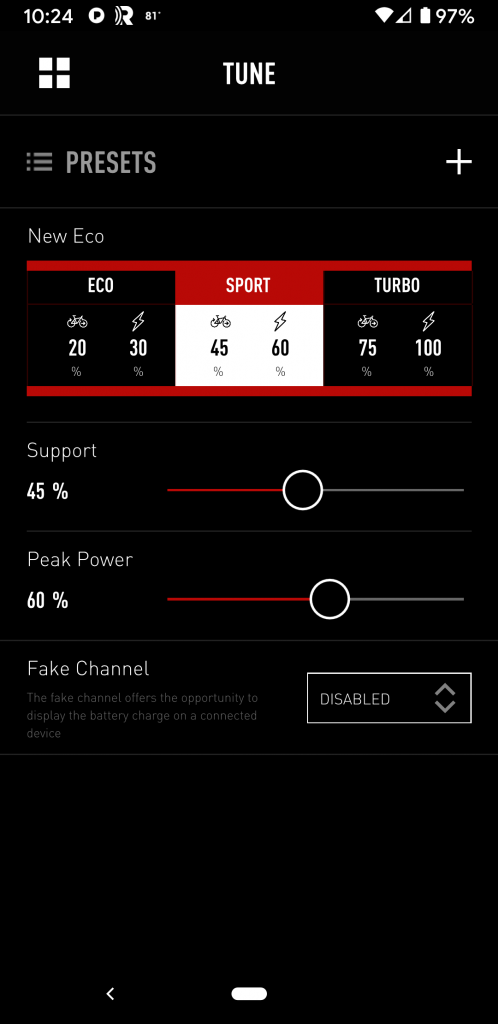
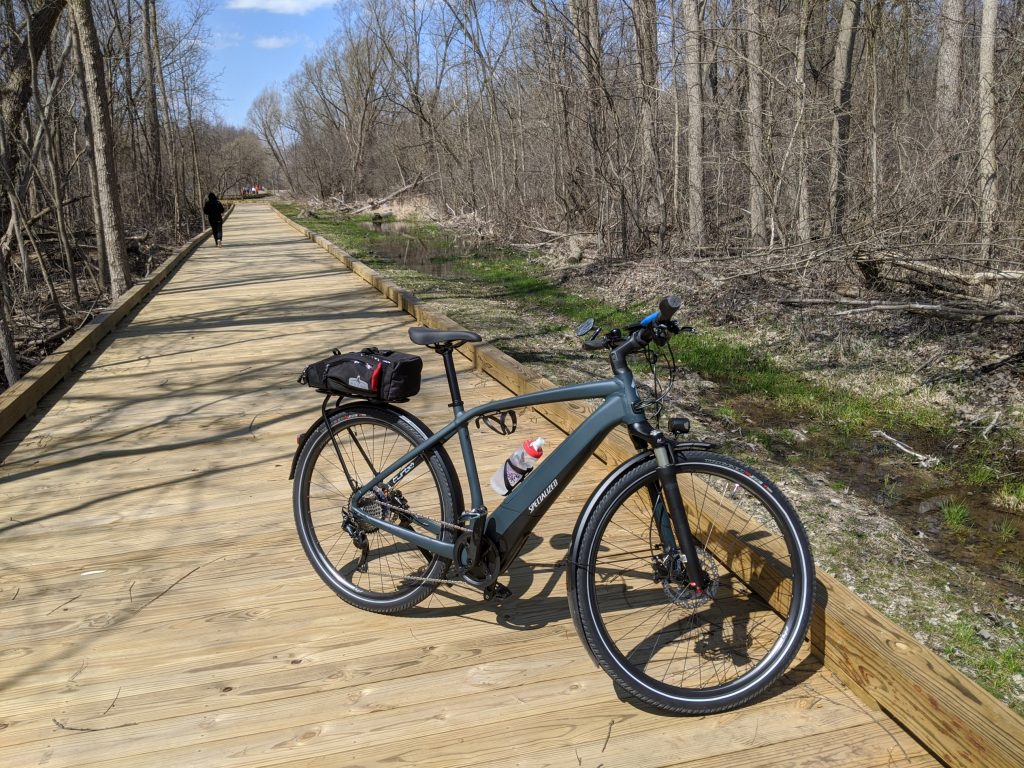
Shimano PD-EH500 Pedals
Most e-bikes that you’ll see just keep the basic platform pedals that come with the bikes, but to me it feels very weird to ride when I’m not clipped in. On the other hand, I do plan on riding this bike on short rides around town when I can just slip on a pair of casual shoes and go. So what I was looking for were two-sided pedals with SPD clips on one side and a good platform on the other side.
The PD-EH500 pedals seem to fit that bill. The SPD side is pretty standard and they have a really grippy platform side that comes with small screw-in studs to give them some bite. They really work. The SPD clips are a different story, as they are specified as being “light release” to make it easier to unclip. My opinion so far is that they are too light to where I feel like I’m barely clipped in. There is an adjustment that I’ll have to play with, and on an e-bike I guess that it’s less important to be solidly attached to the pedals.
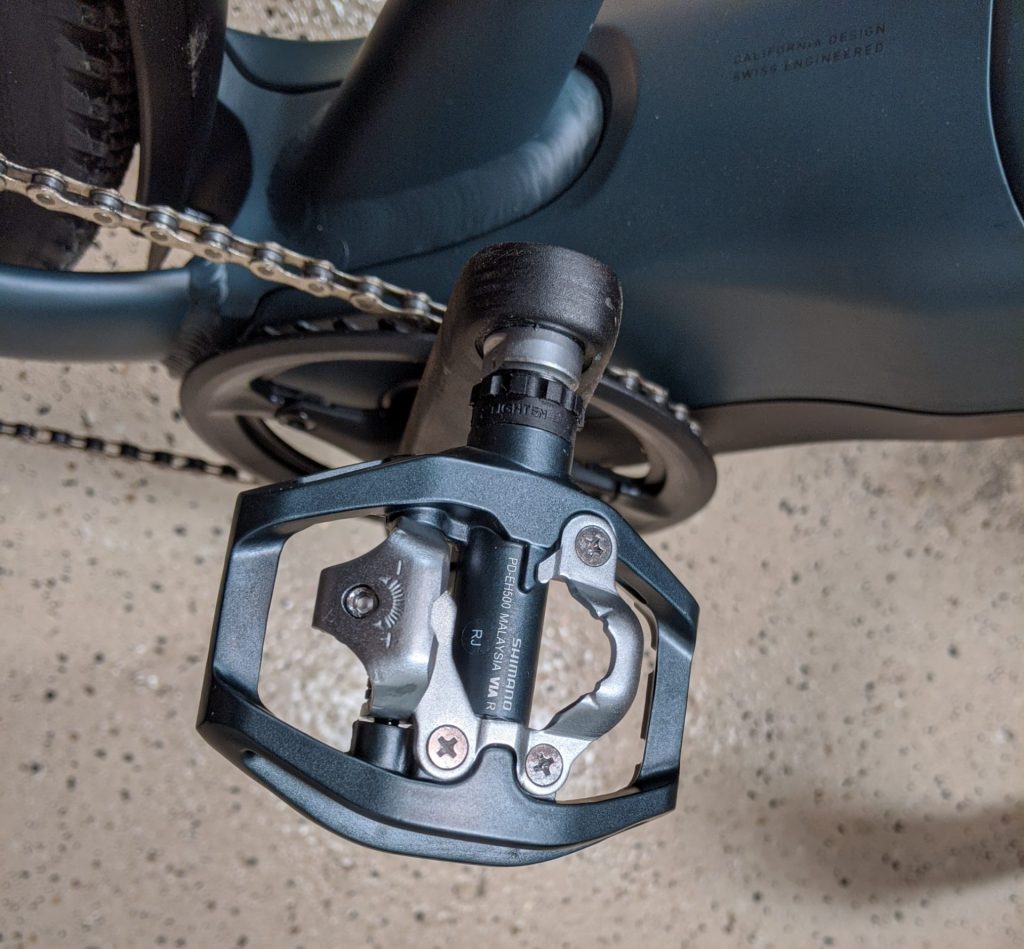
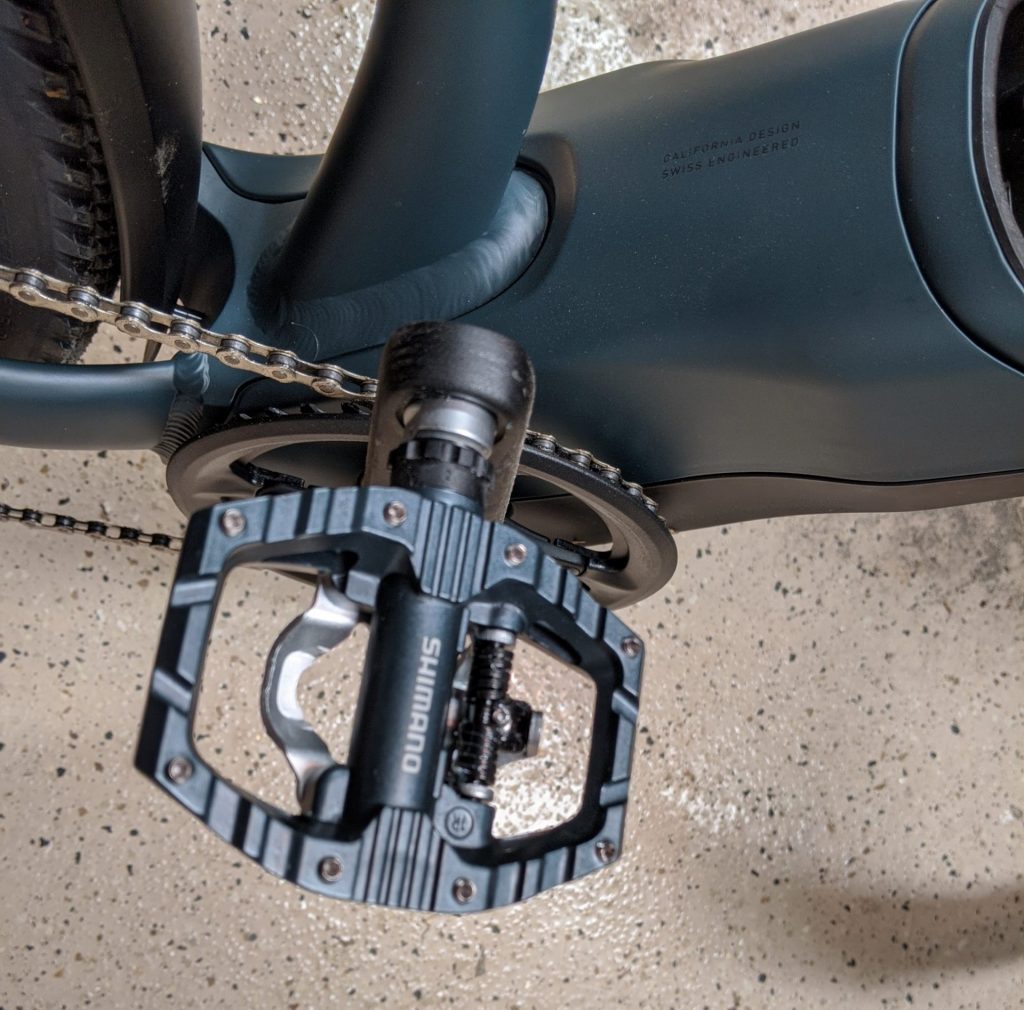
Selle Royal Respiro Saddle
Naturally, one of the first accessory add-ons was a different saddle. I tried a couple of others before settling on the Selle Royal Respiro in the Men’s Moderate model. Note that this is the same basic saddle as I now have on my Felt VR5, but in that case, due to the more forward-leaning riding position, I went with the Men’s Athletic style. The main difference is that the e-bike saddle is a bit wider.
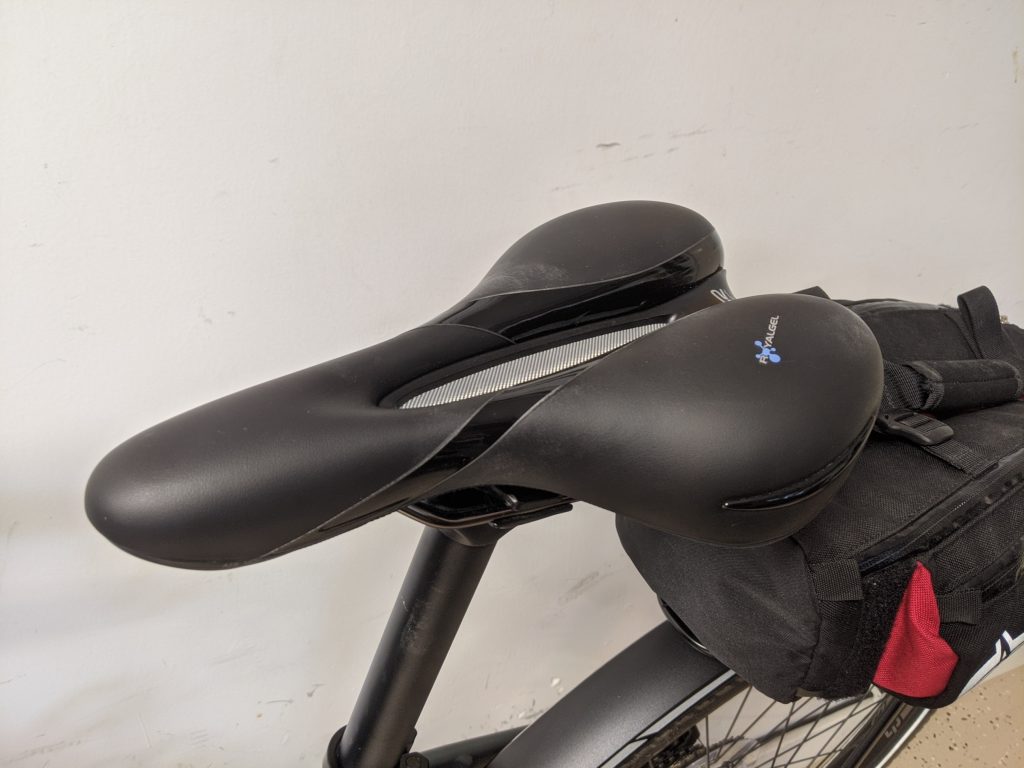
An advantage of having this same saddle on the e-bike is that I was able to buy another bracket from BUPlabs (the one that I beta tested for them last year) to be able to mount my Varia radar taillight if I’m going to be out on the road at all. The bike came with a headlight and taillight, but I generally leave them turned off, and in any case the Varia has a number of technical advantages.
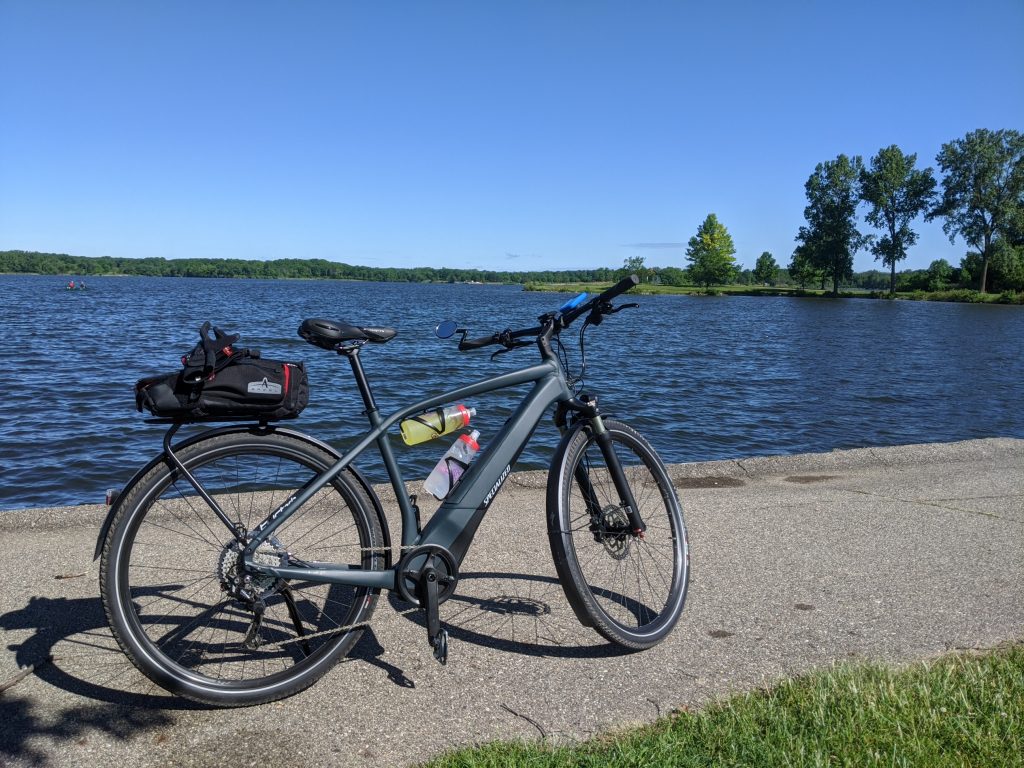
Racktime Adapter and Trunk Bag
The Vado comes with a rear rack that is more or less integral with the rear fender, and there are no other provisions for mounting a third-party product. The rack is listed as Racktime compatible, where Racktime is a sort of European standard for mounting various snap-on trunk bags, saddle bags, etc. From what I was able to find in my searches, I didn’t see any products that were what I had in mind for a basic trunk bag, and besides the ones I found were on the expensive side.
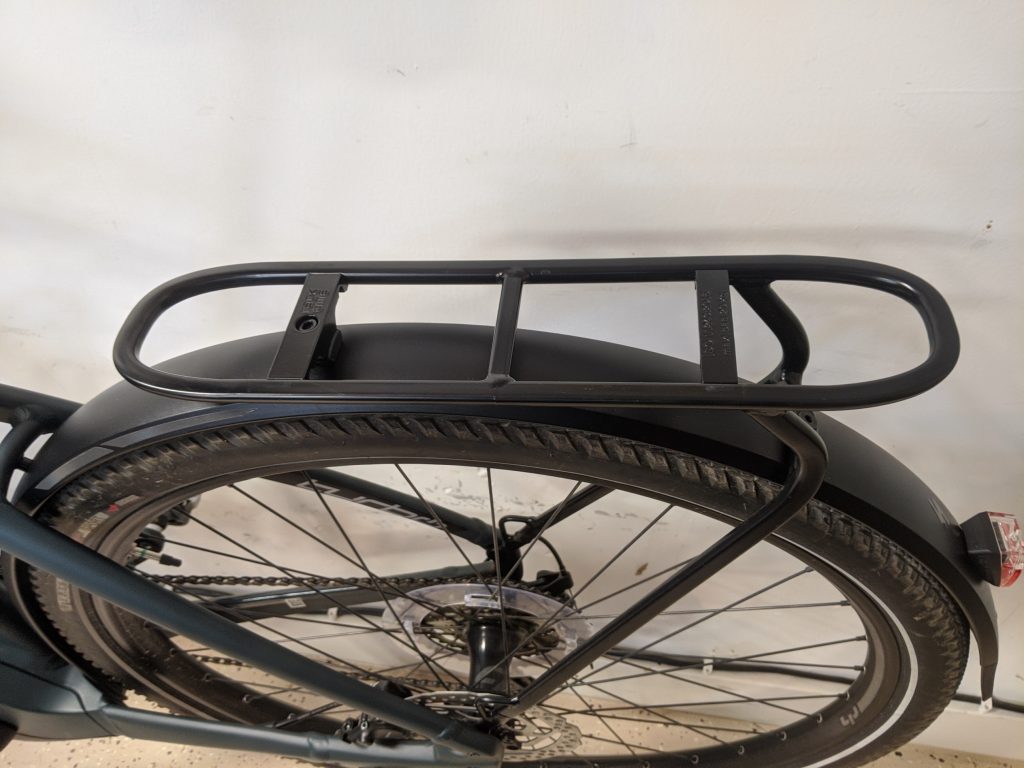
However, I was able to determine that for around $20 I could get an adapter through Amazon on which I could mount an existing bag that I have, or at least buy something more suitable. Looking through my collection of old bags, most of which were too big, I came across the Arkel Tailrider bag that I bought a number of years ago for use with my Cannondale Synapse. As it turned out, situations changed and I never ended up using the bag with that bike before it was eventually sold to make way for the Felt. Problem solved!
The Racktime adapter came with bolts and washers for attaching the bag and I was able to drill some holes in the base of the Tailrider to mount it, and just that simply I now have a nice trunk bag that easily snaps on and off for transporting or washing the bike. It’s still a bit big and has the drawbacks that I pointed out in my earlier review, but it salvages some usage out of the bag and should be suitable for my purposes with this bike.
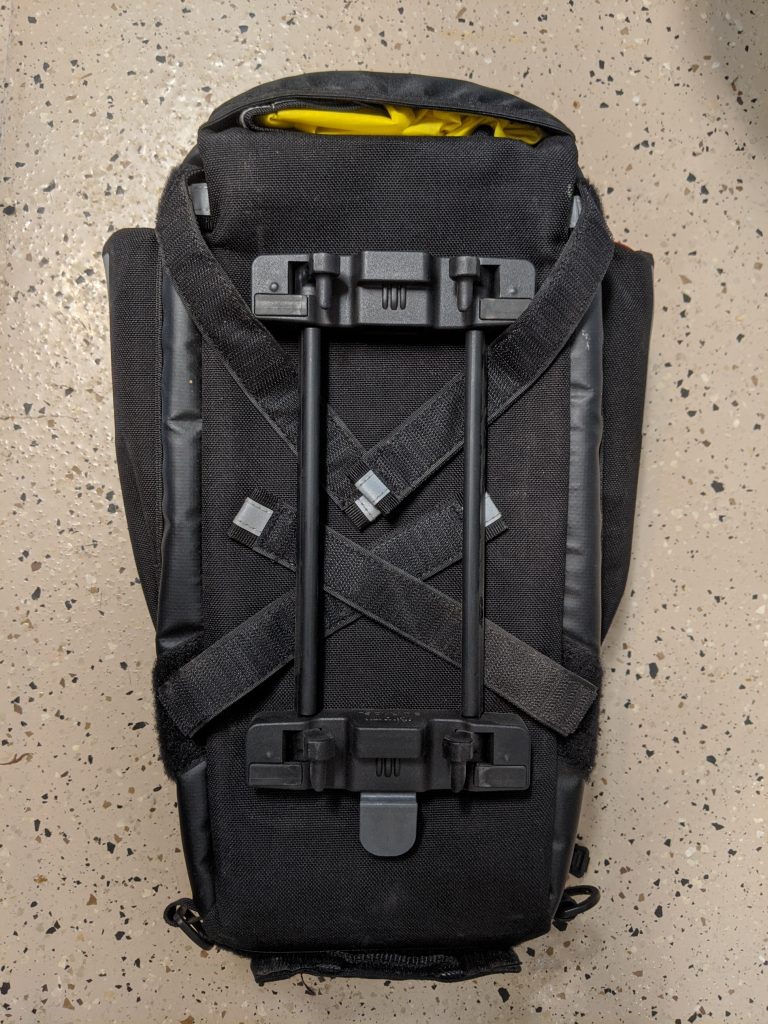
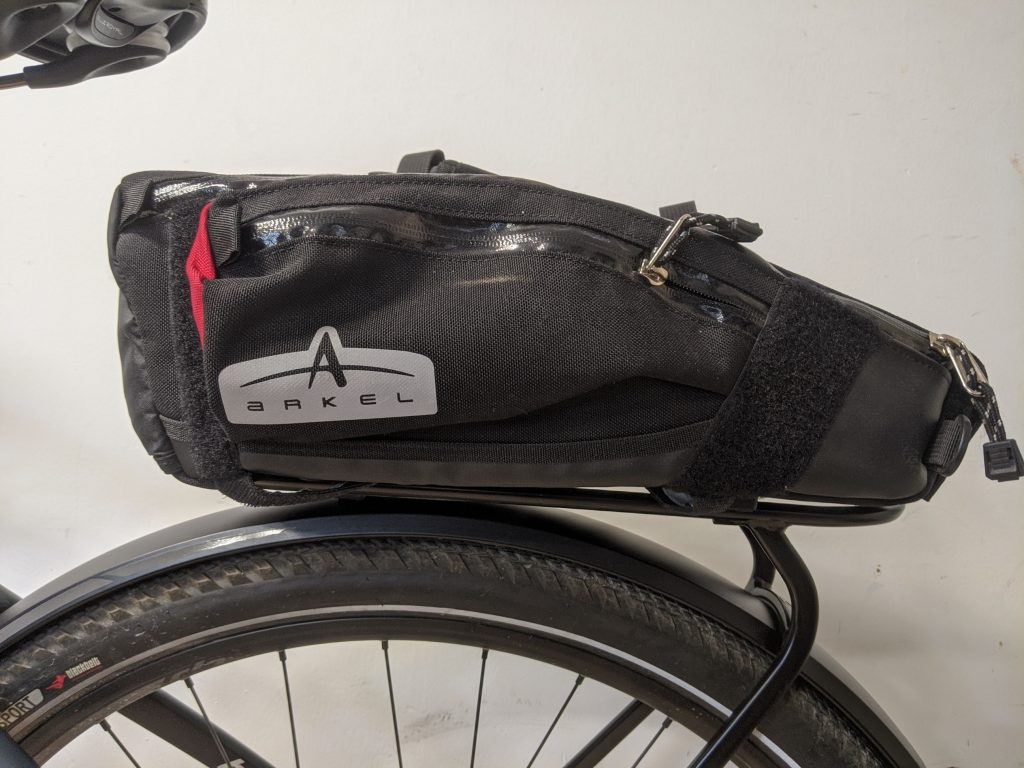
Redshift Shockstop Seat Post
Being a heavy bike that requires a very stiff aluminum frame, I noticed from the start that the bike rode very roughly over pavement cracks and other bumpy terrain, even moreso than my other aluminum bikes. So I did a survey of possible solutions, tried a couple others, and ended up with a Redshift Shockstop seat post.
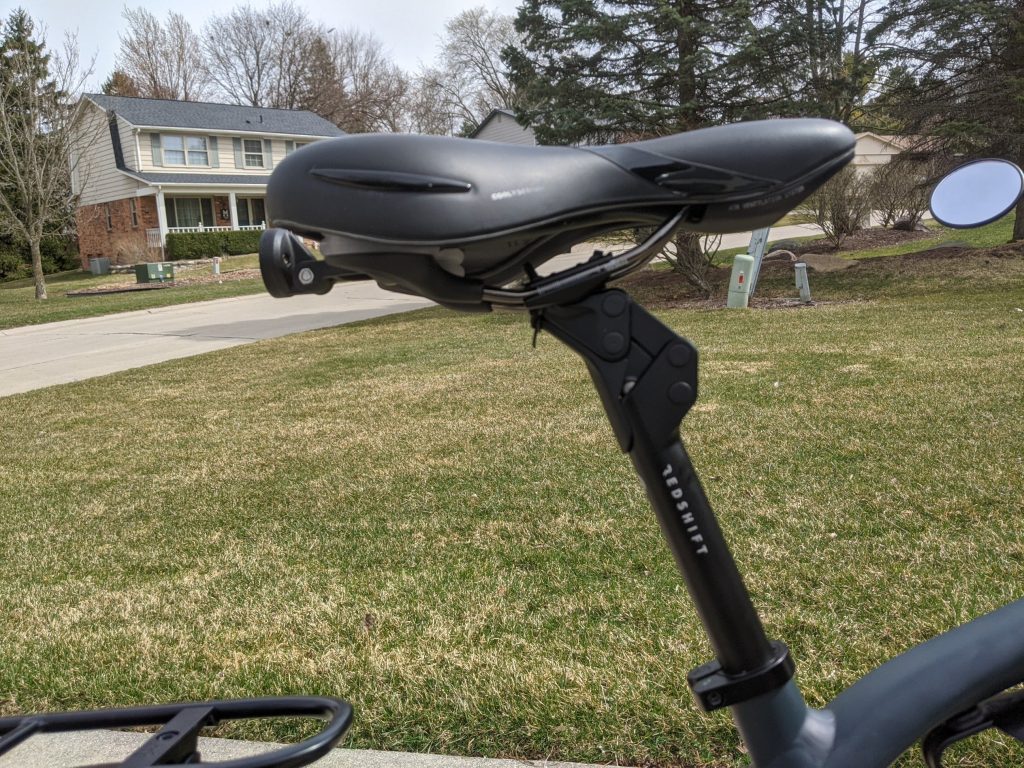
The stiffness is controlled by an adjustment on the bottom end of the post, which means that you have to remove and replace it to make changes. However, it only took me one adjustment after using the supplied guide (based on rider weight) for the initial setting. After riding with this for a while, I just can’t say enough good things about it. It really smooths out all the jarring from typical pavement cracks and gravel roads — almost floats over — and has made riding much easier on my back. It is not a substitute for full suspension, but I’m used to getting up on the pedals when going over larger bumps and potholes.
In fact, I ended up so sold on this product that we now have one on my wife’s e-bike as well as my old Crosstrail hybrid.
Thule EasyFold XT Hitch Rack
When my wife bought her e-bike last year, we ran into a problem when trying to transport our bikes on the back of our car. For one thing, being a step-through frame and having fenders made it difficult to use a conventional rack that typically grabs onto either the top tube or the tops of the tires. Plus, the bike weighed close to 50lbs and we knew that if we ever had two e-bikes (as we now do) we’d be exceeding the capacity of a typical rack. On top of that, at my age and with some issues with my back, lifting one of these bikes onto a rack by myself was no longer a good idea.
Fortunately, we found that Thule had already come to our rescue with its EasyFold XT rack that is specifically designed for e-bikes. It has the capacity for a couple of very heavy bikes and uses a clever clamping system that lets you clamp onto one of the other frame tubes (typically the seat tube). Not only that, but it has an actual folding ramp stored inside that works pretty well if I want to roll one of the bikes on or off the rack. It even has small wheels on the bottom so we can roll it in and out of the garage! It ain’t cheap (what from Thule is?) but we’re really pleased with it.
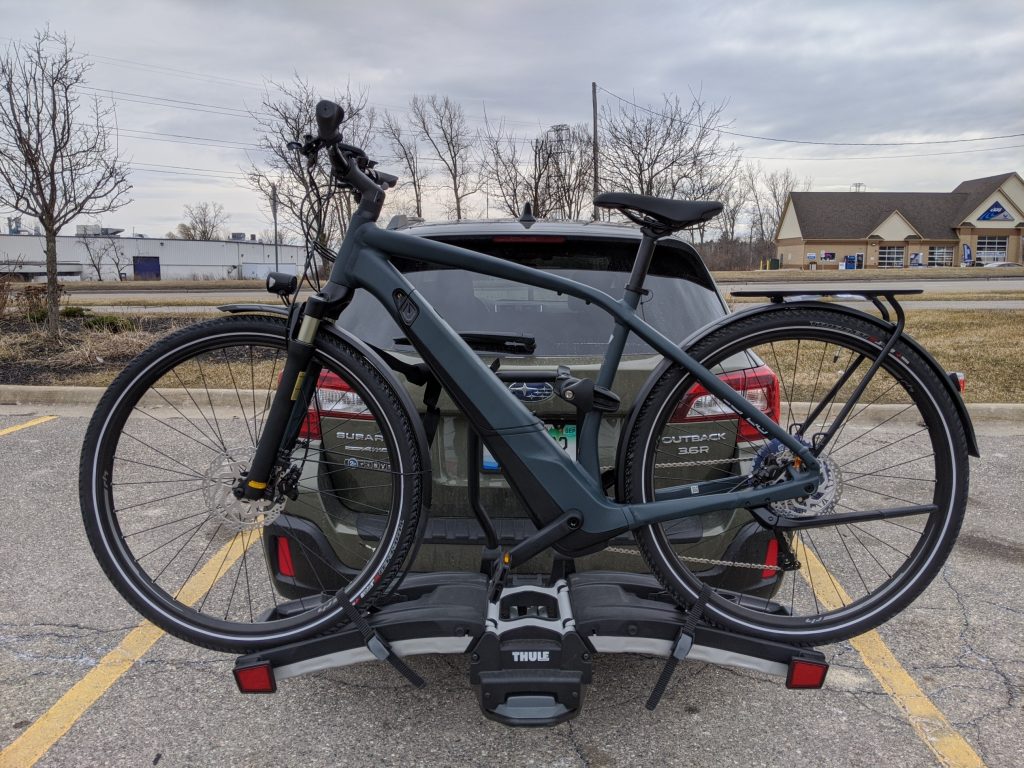
Early Ride Experiences
Writing this after 4 months with the bike, I’ve learned a lot about its capabilities and how I’m actually using it as opposed to what I’d pictured before buying it. So far it’s not been the around-town cruiser that I envisioned, mainly because of the coronavirus situation that has curtailed meeting with my usual group for coffee in the mornings, casually running out to do errands, going out for lunch, etc. On the other hand, a medical issue I’ve been dealing with has made this the best bike to use for recreational rides, where I can ride farther while not exerting myself as much as I would on my conventional bikes.
My decision to go with a major manufacturer soon paid off, as once I started riding the bike a lot, I noticed an annoying clicking sound from somewhere in the internals each time the pedals made rotation. After a couple of service visits to the dealer, Specialized decided to do a full motor replacement under warranty, which has fixed the problem. If this had been an online-order bike, I’m not sure what my options would have been.
Some other things I’ve learned:
- The Mission Control app is definitely worth using. I now have the Eco mode set down even more and can get a good workout if that’s what I’m looking for. It’s the same exertion as on my other bikes, but I’m going faster, which is great fun.
- Battery range is dependent on a lot of things, but with our mostly flat terrain, Eco mode should easily get me 80 miles or so. I did one 50-mile ride on varied surfaces and used less than half the charge.
- The bike is not as hard to pedal with the motor turned off as I expected. It’s no worse than any other 50lb bike, which is actually what some fully loaded touring bikes weigh.
- Even using Eco almost all the time, it’s nice to have Sport mode available toward the end of a long ride when I just want to get back home, or if a large hill looms when I’m already getting tired.
- I’m used to the fenders and am no longer considering removing them. They’ll be especially nice if I’m ever caught in the rain.
As time has gone on, now almost 6 months into ownership, the Vado has settled into its natural place in my lineup of bikes. I am not using it quite in the way I had envisioned, but I’d also hate to be without it. In fact, given the state of my back, if I had not had the e-bike to ride for a couple of months I would not have been getting any outdoor exercise at all.
Year-End Wrapup
At the end of 2020, I’m ready for a final look-back at how this strangest of all years has gone in relation to my bike riding. Since running is now an activity that is in my past, even with my injuries and lack of a long bike tour, I managed to ride over 1460 miles — a personal record. Of these, a full 680 were on the Vado e-bike! I wouldn’t have guessed that I’d gone that many miles and had to look back over my activity log to confirm that I had indeed taken a lot more long local rides than I ever have before. This is definitely due to the ease of riding the Vado, where I could maintain a higher average speed and ride for a longer time than on my conventional bikes.
Another item of note is that there were a couple long periods of time where I wasn’t comfortable on my other bikes due to my back problems, but could always manage the miles with the assist. And there were the pleasantly cool evenings when my wife and I would go out for a casual ride, exploring unfamiliar areas right in our neighborhood, and without having to work up a sweat getting up the hills.
The downside of the bike for me has been having to deal with its weight. Even if I weren’t concerned with the weight in respect to my physical limitations, it has restricted where I can ride it — it is no off-road bike. A couple of times when I took my Felt carbon road bike for a ride, I’d almost be startled by how light and agile it is by comparison. I sometimes think that it’s unfortunate that I wasn’t able to wait to possibly get the newer Vado SL model that weighs 15+ lbs less. The SL has a smaller battery and less assist available, but I keep the assist on my Vado turned down anyway and the SL would certainly be adequate for me. Maybe next time…
As I write this, the Vado is stored for the winter and it will be 4 more months until I get it out again, so we’ll see how my second full season with it goes. I’ll know more what to expect and hope to take a few more long distance local excursions with it.
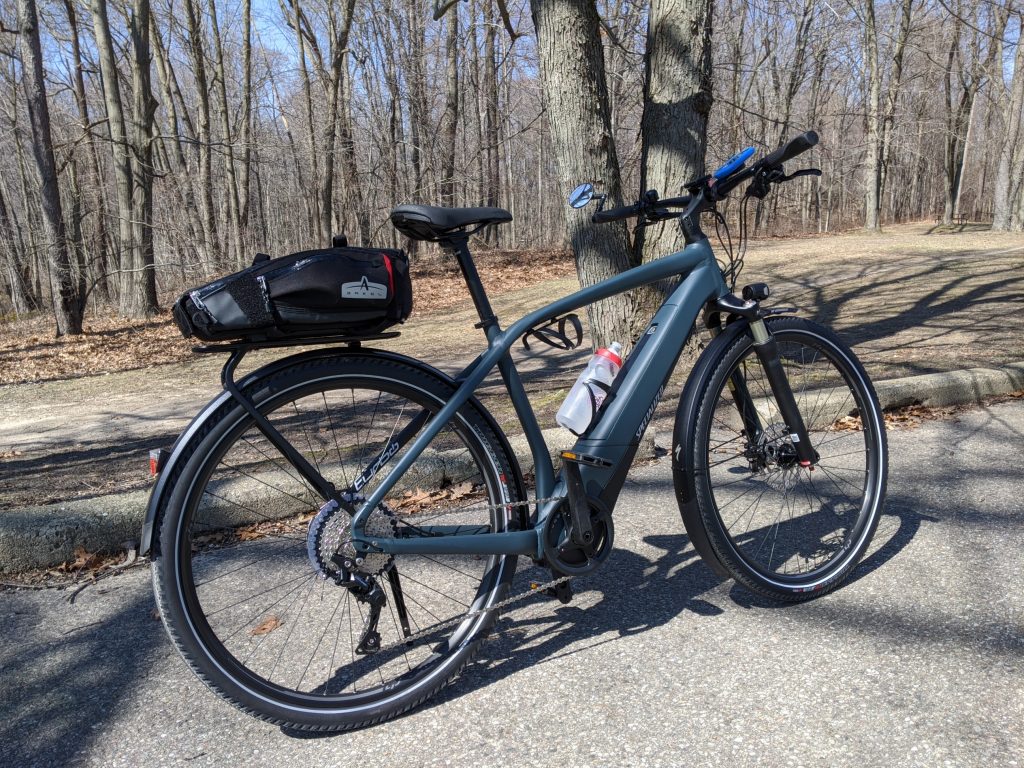
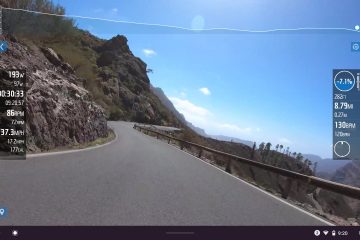
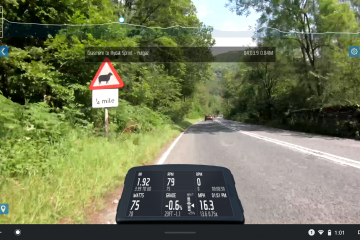
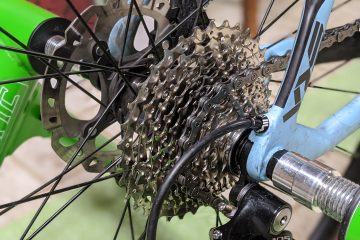
1 Comment
Lisa · May 25, 2021 at 2:27 am
Thanks for sharing your experiences. Very helpful. I’m picking up my Vado 4.0 next week.